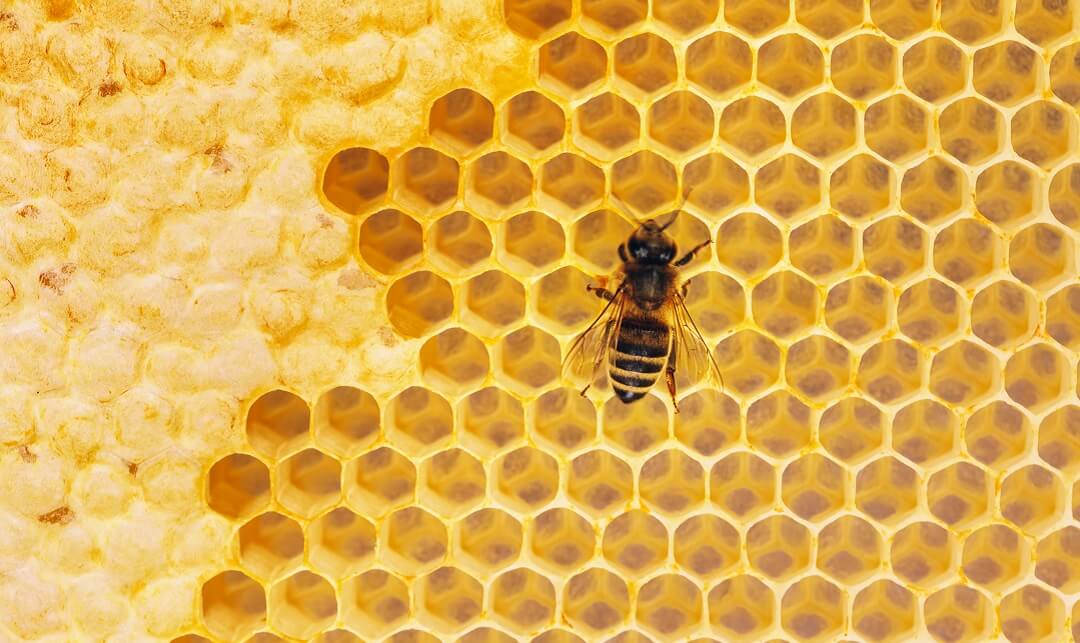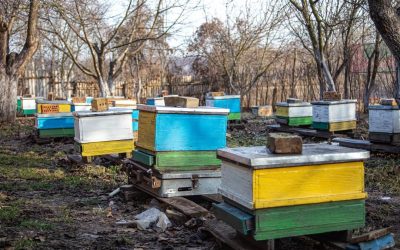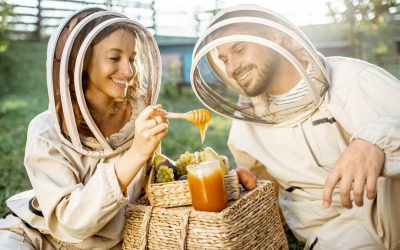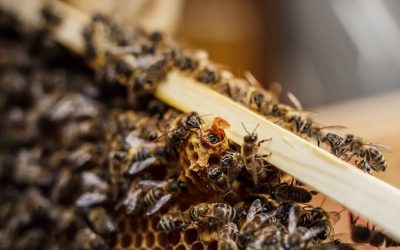How Does Honey Bee Health Work?
To comprehend the importance of monitoring honey bee health, it’s essential to understand how the health of these incredible insects functions. Honey bees, as social insects, live in highly organized colonies consisting of a queen, worker bees, and drones. Each member of the colony has specific roles and responsibilities, contributing to the overall hive functioning.
The health of honey bees revolves around various factors such as genetic diversity, nutrition, environmental conditions, and disease resistance. By monitoring honey bee health, we can identify potential issues early on and take necessary actions to prevent the spread of diseases and promote hive vitality.
How to Keep Honey Bees Healthy
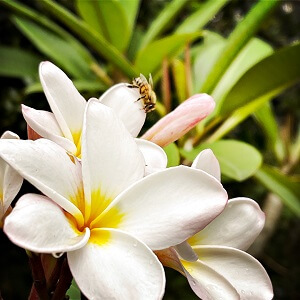
Providing Proper Nutrition
Nutrition is a fundamental aspect of honey bee health. Ensure that your bees have access to a diverse range of nectar and pollen sources throughout the year. Planting bee-friendly flowers and avoiding the use of pesticides in your garden can provide a safe foraging environment for the bees. Additionally, feeding the bees with sugar syrup or pollen patties during periods of scarcity is crucial to maintain their strength and vitality.
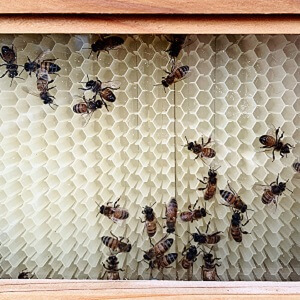
Maintaining a Clean and Well-Ventilated Hive
Regular hive maintenance is vital for honey bee health. Keep the hive clean, removing any debris or dead bees. Ensure proper ventilation to prevent the buildup of excess moisture, which can lead to mold and disease issues.
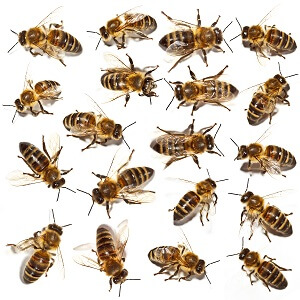
Promoting Genetic Diversity
Maintaining genetic diversity within bee populations is crucial to their health and resilience. When purchasing bees, opt for local or regionally adapted stock. This helps ensure that your bees are well-suited to the local environment and have a better chance of withstanding various challenges.
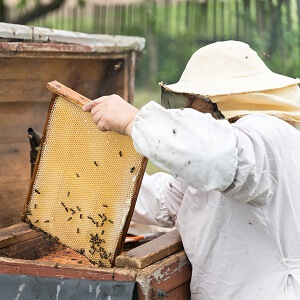
Minimizing Stress Factors
Stress can weaken honey bee colonies and make them more susceptible to diseases. Minimize stress factors by avoiding frequent hive inspections, providing a stable and consistent environment, and handling the bees gently and calmly. Additionally, consider the location of your hives, avoiding high pesticide areas and providing protection from harsh weather conditions.
Understanding Common Honey Bee Diseases and Disorders
Varroa Mites
Varroa mites (Varroa destructor) are one of the most significant threats to honey bee health. These tiny external parasites attach themselves to adult bees and their brood, feeding on their hemolymph (bee blood) and transmitting viruses. Regular monitoring and treatment for varroa mites are crucial to prevent their destructive impact on colonies.
Nosema
Nosema is a fungal disease caused by the microsporidian parasites Nosema apis and Nosema ceranae. It affects the digestive system of bees and can lead to weakened immune systems, reduced lifespan, and colony decline. To monitor and manage nosema, you can send samples to a specialized lab or use test kits available in the market.
American Foulbrood (AFB)
AFB is a highly contagious and fatal bacterial disease affecting honey bee larvae. Infected larvae turn into a gooey mass, emitting a foul odor. Strict measures, including the destruction of infected hives and equipment, are necessary to prevent the spread of AFB. Regular inspections and early detection are crucial in managing this disease.
Colony Collapse Disorder (CCD)
Colony Collapse Disorder is a syndrome characterized by the sudden and unexplained disappearance of worker bees from a hive, leaving behind the queen and a few young bees. The exact cause of CCD is still unknown, although various factors such as pests, diseases, pesticides, habitat loss, and stressors may contribute. Monitoring hive health and taking preventative measures against other diseases and stressors can help reduce the risk of CCD.
Monitoring Techniques for Honey Bee Health
Visual Hive Inspections
Regular visual inspections allow beekeepers to observe the overall condition of the hive, including the presence of healthy brood patterns, the behavior of adult bees, and signs of diseases or pests. Conducting inspections every 2-3 weeks during the active season is recommended.
Sticky Board Monitoring
Sticky boards placed at the bottom of the hive help monitor mite populations. Mites that fall off the bees land on the sticky board, providing an estimate of their numbers. Regularly checking and counting mites on the sticky board can indicate the need for intervention.
Sample Collection and Laboratory Testing
Collecting samples from the hive, such as bees, honey, or brood, and sending them to a specialized laboratory can provide a more accurate assessment of the hive’s health. Laboratory testing can detect diseases, parasites, and other pathogens that may not be evident during visual inspections.
Prevention and Treatment Measures
Integrated Pest Management (IPM)
Implementing an Integrated Pest Management approach is crucial for preventing and managing honey bee diseases and pests. IPM involves a combination of cultural, biological, and chemical control methods. Cultural practices include maintaining a clean hive, providing proper nutrition, and promoting genetic diversity. Biological control methods involve the use of natural predators and beneficial organisms to control pests. Chemical control, when necessary, should be used judiciously and following recommended guidelines.
Varroa Mite Management
Varroa mites are a significant concern for beekeepers, and effective management is crucial. Various methods can be employed, including the use of organic treatments, such as formic acid or oxalic acid, which are applied during specific times of the year when the mite population is at its peak. Additionally, mechanical methods such as screened bottom boards or drone brood removal can help reduce mite levels.
Medications and Treatments
There are specific medications and treatments available for certain honey bee diseases and disorders. However, it is important to follow the instructions carefully, as incorrect usage can lead to resistance and other negative effects. Consult with local beekeeping associations or experienced beekeepers to determine the most appropriate treatment options for your specific circumstances.
Hygienic Beekeeping Practices
Practicing good hygiene in beekeeping is essential for maintaining honey bee health. This includes regularly cleaning and sterilizing hive equipment, replacing old or contaminated comb, and removing dead bees and debris from the hive. Keeping a clean and hygienic environment reduces the risk of disease transmission and promotes overall hive health.
Beekeeper Education and Networking
Continued education and networking with other beekeepers are valuable resources for monitoring and maintaining honey bee health. Attend workshops, conferences, and local beekeeping association meetings to stay updated on the latest research, best practices, and emerging threats to honey bee health. Sharing knowledge and experiences with fellow beekeepers can help identify potential issues and find effective solutions.
Environmental Considerations
Environmental factors play a significant role in honey bee health. Beekeepers can contribute to a healthy environment by avoiding the use of pesticides and planting bee-friendly flowers and trees. Additionally, providing a water source within the vicinity of the hive helps prevent bees from seeking water from potentially contaminated sources.
Conclusion
Monitoring honey bee health is of paramount importance for beekeepers, as it allows for the early detection and management of diseases and disorders that can threaten hive vitality. By understanding bee biology, recognizing common diseases and disorders, implementing effective monitoring techniques, and promoting prevention and treatment measures, beekeepers can contribute to the well-being and survival of honey bee colonies.
Remember, honey bees are not just honey producers; they are vital pollinators that contribute to the sustainability of our ecosystems and food production. As responsible beekeepers, we have a responsibility to ensure their health and well-being. By following the tips and guidelines provided in this guide, you can establish a strong foundation for successful beekeeping and contribute to the preservation of these incredible creatures.

